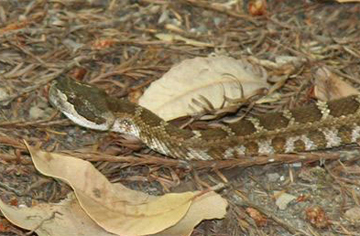Squirrels use snake skin to disguise themselves from predators
Squirrels use snake skin to disguise themselves from predators
By Andy Fell, UC Davis
December 20, 2007
|
|
California ground squirrels and rock squirrels chew up rattlesnake skin and smear it on their fur to mask their scent from predators, according to a new study by researchers at UC Davis.
Barbara Clucas, a graduate student in animal behavior at UC Davis, observed ground squirrels (Spermophilus beecheyi) and rock squirrels (Spermophilus variegates) applying snake scent to themselves by picking up pieces of shed snakeskin, chewing it and then licking their fur.
Adult female squirrels and juveniles apply snake scent more often than adult males, which are less vulnerable to predation by snakes, Clucas said. The scent probably helps to mask the squirrel’s own scent, especially when the animals are asleep in their burrows at night, or to persuade a snake that another snake is in the burrow.

Squirrels communicate with rattlesnakes using heated tail |
The squirrels are not limited to the use of shed snake skins, said Donald Owings, a professor of psychology at UC Davis who is Clucas’ adviser and an author on the paper. They also pick up snake odor from soil and other surfaces on which snakes have been resting, and use that to apply scent. Other rodents have been observed using similar behavior.
Snake-scent application is one of a remarkable package of defenses that squirrels use against rattlesnakes, Owings said. In earlier work, Owings’ lab has found that squirrels can: heat up their tails to send a warning signal to rattlesnakes, which can “see” in the infrared; assess how dangerous a particular snake is, based on the sound of its rattle; and display assertive behavior against snakes to deter attacks. In addition, work by Owings’ colleague, psychology professor Richard Coss, has demonstrated that these squirrels have evolved resistance to snake venom.
“It’s a nice example of the opportunism of animals,” Owings said. “They’re turning the tables on the snake.”